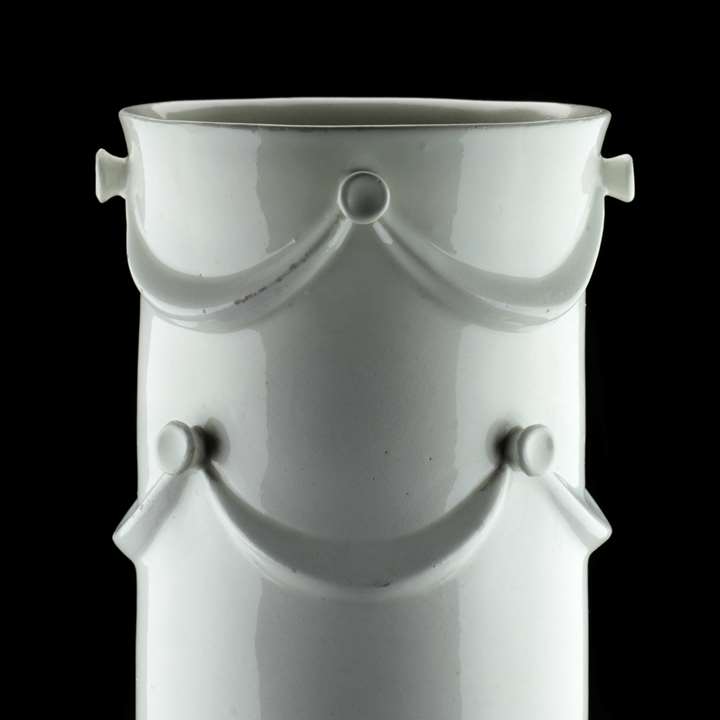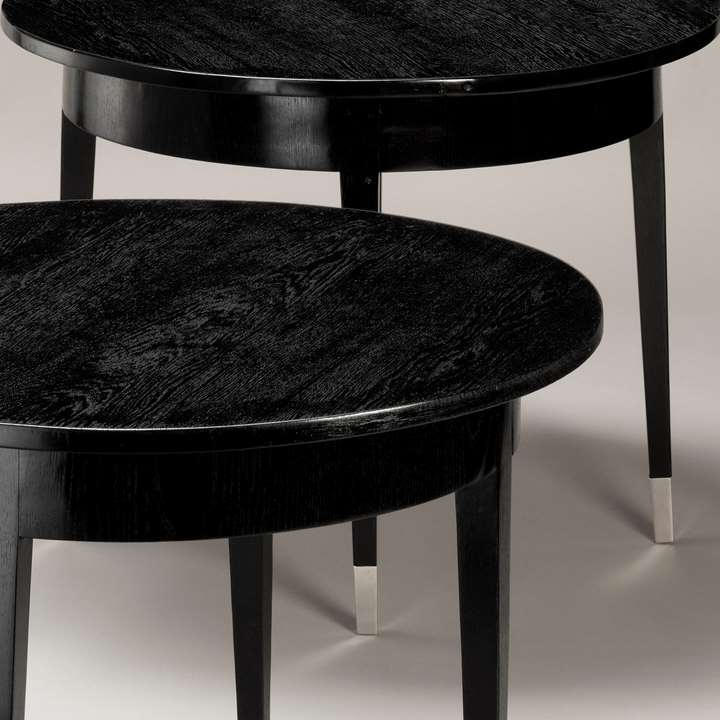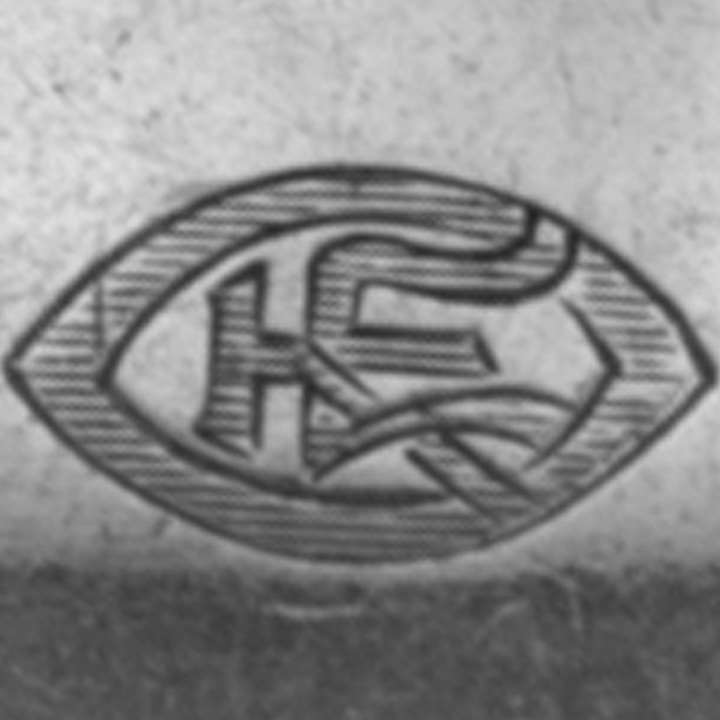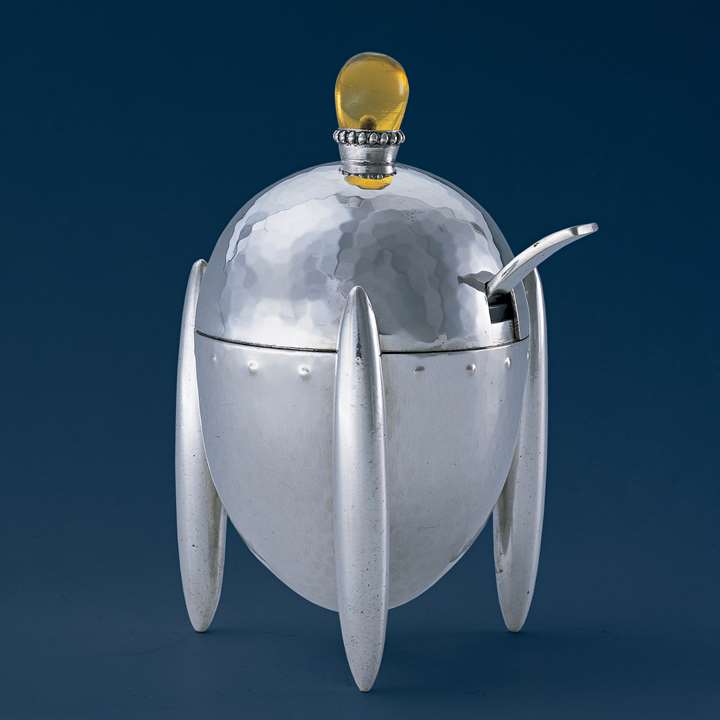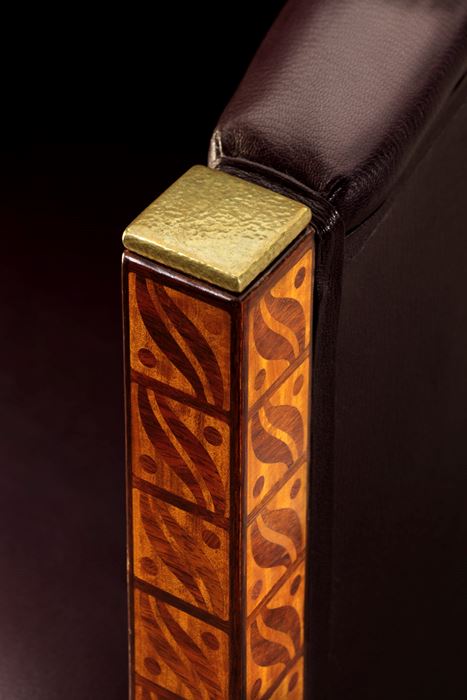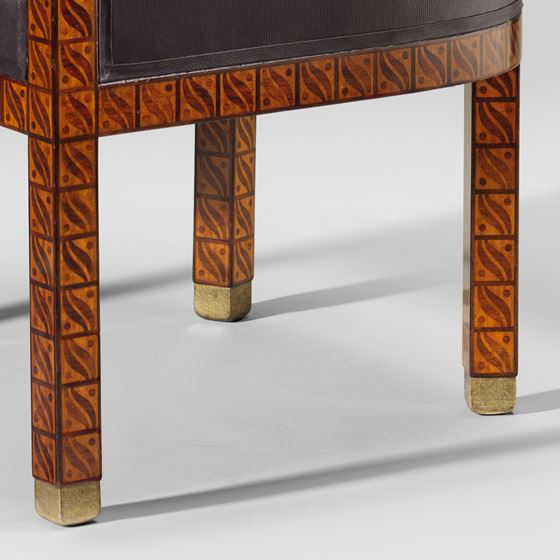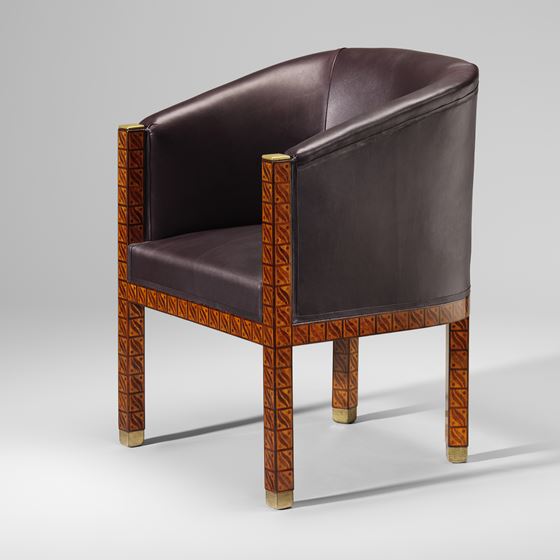Description & Technical information
Made for the Gustav Pollack apartment
Executed by Potois & Fix, Vienne.
One piece known.
Christian Witt-Dörring curator at the Neue Galerie, writes :
In 1901/02, Josef Hoffmann furnished three rooms for Gustav Pollak's apartment in Vienna 4, Brahmsplatz 2. One of them was a dining room, in which the furniture shown here once stood. It was made by Portois & Fix, one of the most reputable, major cabinet makers and furnishing houses in Vienna. Hoffmann was confronted with an existing room volume from the late nineteenth century, into which he fitted his interior concept. He managed this using only few individual pieces of furniture, such as the round dining table and the matching armchairs. He set the remaining moveables such as the two sideboards into the panelling, which skirted the whole room to three fifths of the walls' height and was in stark contrast to their yellowish-grey colour. This gave rise to a clear optical division between bright existing room shell and Hoffmann's actual furnishing, which was kept dark. Hoffmann had an ingenious ability to integrate all space-consuming case furniture into the wall configuration, in the process taking the first major step towards modern interior design, which aims to put as little material as possible in the way of the provided space. The horizontal emphasis of his furnishing concept, which adapts the case pieces to the height of the wall panelling, the nineteen luminaires pendant at one level from the ceiling, and the eight mirrored wall sconces each set in pairs at one level are all part of a further artistic contrivance he uses to becalm the room's contents.
The extendable dining-room table and the two sideboards are kept in clear and simple stereometric forms and are among Hoffmann's earliest pieces of furniture that no longer permit the board to take the stage as linking, structural element, but favour a cubic, enclosed configuration. The table is a further development of his hall table for the Villa Henneberg (1900/01). Hoffmann gives it a stronger monumentality as central piece not only by reinforcing the dimensions of all structural elements, but puts a solid pedestal tier on the base board, which results in a shortening of the legs. Like all the other furnishings the table is made of pitch pine with marquetry elements of South American satin wood with mounts of copper. Particularly the table top is a supreme manifestation of the first-class workmanship and creative use of veneer. The veneer of the table top is book-matched in four parts so that its grain centres in the middle and is framed at the edge by a wide band, meanwhile the framing band itself exploits the parallel grain of the wood in such a way that its continuous alignment gives the impression of a fringed border. The armchairs with their original covering of red leather and copper nails are fashioned with slender proportioning and flat upholstery, which underline their inherent mobility in contrast to the fixed positioning of the table.
Date: 1901-1902
Period: 20th century
Origin: Vienna
Medium: Rosewood, Brass, Zerigotti marquetry
Dimensions: 79.25 x 58.93 x 54.61 cm (31¹/₄ x 23¹/₄ x 21¹/₂ inches)
Categories: Furniture
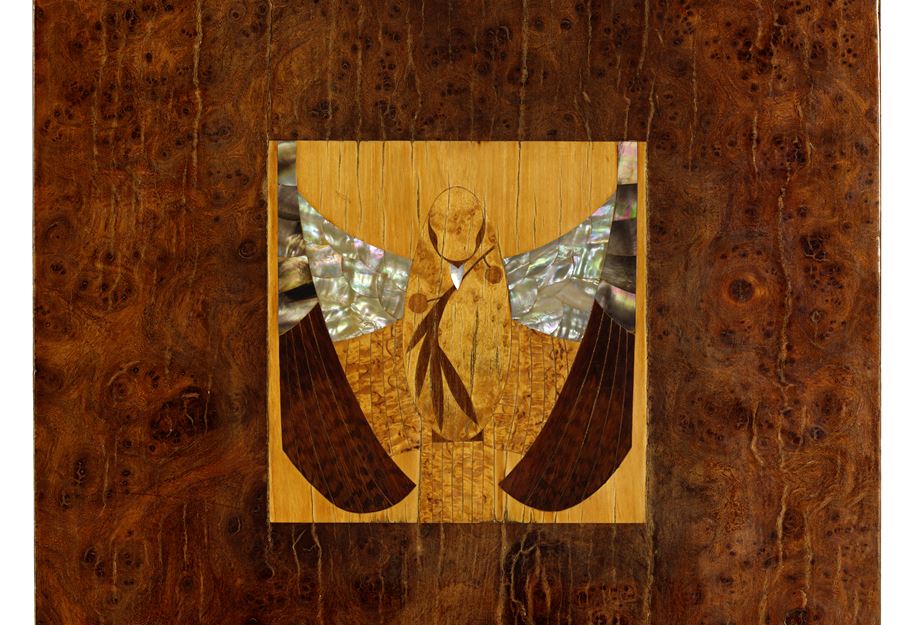
Discover the gallery
Yves Macaux
20th Century Decorative Art

